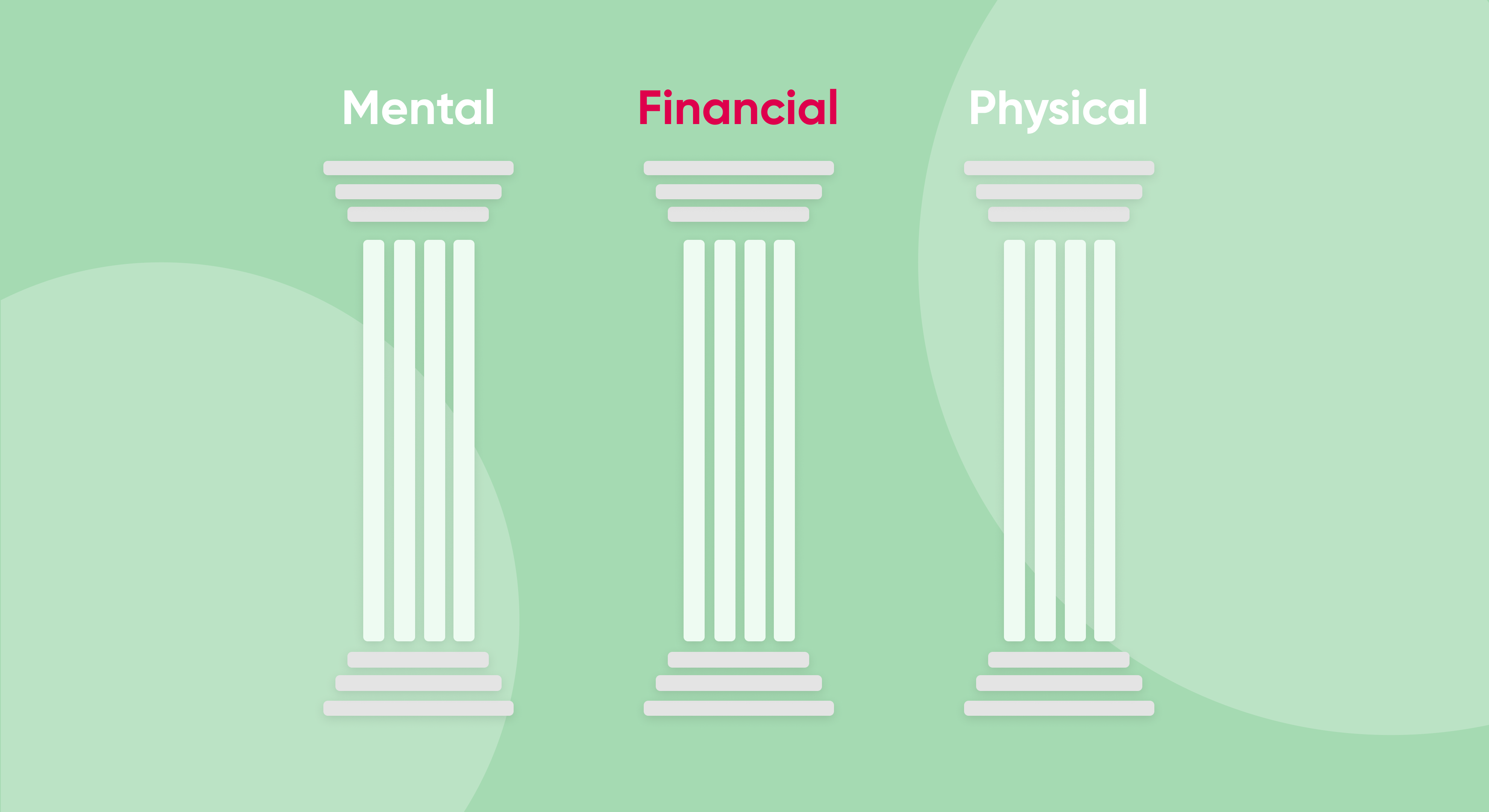6 min read
Should employers acknowledge Blue Monday?
Blue Monday (15 January) has a mixed reputation. But there’s still value in using the day to raise awareness of mental health and wellbeing...

Employee wellbeing has three pillars: physical, mental and financial.
Today, each is recognised as critical to developing a strong, healthy organisation.
Get employee wellbeing right, and it can help you build what McKinsey, a global management consulting firm, would class as a “non-traditional employee value proposition”. This is where you make your organisation an attractive workplace for current (and future) employees, beyond the traditional aspects – like salary, job title and career progression.
It also helps the bottom line. A recent Saïd Business School study found that organisations with a high level of employee wellbeing are more likely to have high employee productivity and low employee turnover.
These result in:
With much of the world now in economic turmoil, HR, benefits and wellbeing leaders must get their employee wellbeing strategies into shape. The resilience of your organisation depends on the wellbeing of your people.
So, in this article you’ll learn:
The physical wellbeing pillar encompasses everything to do with employee physical health. It often includes support with medical insurance and initiatives to promote exercise and healthy living. The goal is to help employees improve or sustain their physical health.
Physical wellbeing was one of the first recognised areas of employee wellbeing. As Clare Bettelley writes in Employee Benefits, its origins can be traced back to the 1950s when employers began offering private healthcare via the workplace.
Physical wellbeing typically includes offering these essential benefits to employees:
We consider physical wellbeing to be the most essential of the three pillars – it’s the first one an organisation should add to its employee wellbeing strategy. This is because it is the most important to employees. A recent HBR survey found health, dental and vision insurance to be the number one most popular employee benefit, with 88% of employees considering it valuable.
But physical wellbeing alone is not enough to fully support employee wellbeing.
The mental wellbeing pillar encompasses everything to do with boosting employee mental health.
The goal of the pillar is to help as many employees as possible achieve good mental wellbeing. By good mental wellbeing, we mean employees being able to cope well with daily life, navigate stressful situations, connect with others and enjoy learning and growing.
Mental wellbeing support should also include adequate measures for those suffering from spectrum and/or anxiety disorders along with other clinical mental and neurological disorders.
Poor mental health and wellbeing will affect 25% of people during their lives, according to CIPD. And that partly explains why mental wellbeing has steadily gained prominence as an employee wellbeing benefit over the past decade.
But demand for employers to offer more support in this area increased dramatically following the toll COVID lockdowns and social distancing took on employee mental health.
To support mental health, organisations usually offer:
Employers should also take into account:
Financial wellbeing encompasses everything to do with supporting employees to become or remain financially healthy.
As the CIPD points out, as a result of the cost of living crisis, “employers have a more important role to play than ever before in supporting their employee's financial wellbeing”.
Our recent survey found that 67% of employees say financial stress negatively affects their work, while the average employee is spending 3.5 working days per year managing their personal finances while at work. Demand for financial wellbeing support is also very high, with 76% of employees saying they’d use a financial wellbeing support from their employer.
Financial support can come in all shapes and sizes, but these are the best practice ways:
Financial wellbeing in the workplace goes beyond the cost of living crisis. And so it should. Because levels of financial literacy are comparatively low in the UK.
Indeed, our recent survey showed that only one in five Generation Z employees feels in control and happy about their money, compared to 25% of Millennial employees, 28% of Generation X and 38% of Baby Boomer employees.
As they continue to reshape employee wellbeing strategies, it’s essential that organisations realise how important it is to provide employees with personal finance skills that are all too often missing.
Let’s not pretend supporting employee wellbeing is straightforward. There are several reasons why it's not:
You can't control the wellbeing outcome of every employee. But you can offer a range of preventative measures and interventions across each of the three pillars, making your organisation comfortably able to help most employees with most wellbeing challenges.
You'll also need to consider that all three pillars of employee wellbeing are linked. So, there'll be some overlap.
Sometimes, poor mental health is caused by financial stress – in which case financial wellbeing support might help alleviate poor mental health. And sometimes, poor mental health can lead to poor physical health.
For example, poor mental health could be the result when an employee feels that a few too many things are out of their control. But it could be that they are feeling stressed about rising mortgage payments – in which case support from the financial wellbeing pillar could help solve a problem associated with the mental wellbeing pillar.
With this in mind, here are three questions you should consider when working out how to combine physical, mental and financial wellbeing in your organisation:
The data behind wellbeing washing's true cost |
 |
|
Gain a comprehensive review of the current state of wellbeing washing and its impact in the UK, based on a nationally-representative survey of 1,000 adults conducted in May 2023. Download 'Wellbeing Washing: The True Cost'
|

6 min read
Blue Monday (15 January) has a mixed reputation. But there’s still value in using the day to raise awareness of mental health and wellbeing...

4 min read
Ever wished you had a money-whiz friend you could ask anything, as often as you like?

7 min read
Millions are being impacted by financial stress. Yet, until now, workers in frontline occupations have not been able to benefit from educational...